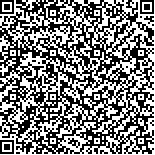| 摘要: |
| 根据对胶州湾外一站位连续1 年逐月采样所获得的资料, 研究报道了南黄海强壮箭虫(Sagitta crassa)的生活史特征。南黄海强壮箭虫共有5 个世代:(1)春季世代(2—5 月), 生长率为0.0066/d; (2)夏季世代(6—8 月), 生长率为0.0038/d; (3)夏季世代(6—9 月), 生长率为0.0090/d; (4)夏季-秋季世代(7—11 月), 生长率为0.0152/d; (5)秋季-春季世代(10—5 月), 生长率为0.0160/d。强壮箭虫的生产力和摄食率分别为0.67 g C/(m2·a) 和2.33 g C/(m2·a)。本研究结果表明, 南黄海强壮箭虫5个世代中的夏-秋世代和秋-春2 个世代的生长率较高; 南黄海强壮箭虫的全年平均生产力显著低于东京湾, 但对南黄海浮游动物的摄食压力却与东京湾相当。
|
| 关键词: 强壮箭虫, 南黄海, 世代 |
| DOI:10.11693/hyhz201002004004 |
| 分类号: |
| 基金项目:国家重点基础研究发展计划973 项目, 2006CB400606 号 |
附件 |
|
| LIFE CYCLE OF THE CHAETOGNATH SAGITTA CRASSA IN THE SOUTHERN YELLOW SEA, CHINA |
|
HUO Yuan-Zi1,2, SUN Song1, YANG Bo1
|
|
1.Key Laboratory of Marine Ecology and Environmental Science, Institute of Oceanology, Chinese Academy of Sciences;2.Graduate School, Chinese Academy of Science
|
| Abstract: |
| Based on monthly sampling data at a station in Jiaozhou Bay in 2006, the life cycle and production rate of Sagitta crassa and feeding rate on the other zooplankton in the southern Yellow Sea were studied. We sampled S. crassa by towing with a conical plankton net in mesh size of 500 μm vertically from near the bottom to the surface. In laboratory, the samples were counted, the dry weight measured, and the length-weight relationship built. The life cycle of S. crassa was described in frequency distribution of the body length. The relationships of production (P) and feeding rate (F) with repertory rate (R) were regressed by P = 0.46 R and F = 1.6 R, where R was calculated as a function of dry weight and water temperature. The results show that S. crassa has five generations in the study area: (1) spring generation (Feb.—May) in growth rate of 0.0066 d–1; (2) summer generation (Jun.—Aug.) in growth rate of 0.0038 d–1; (3) summer generation (Jun.-Sep.) in growth rate of 0.0090 d–1; (4) summer-autumn generation (Jul.—Nov.) in growth rate of 0.0152 d–1; and (5) autumn-spring generation (Oct—May) in growth rate of 0.0160 d–1. The production rate and feeding rate was 0.67 and 2.33 g C/(m2·a), respectively. The results indicate that the growth rate of summer-autumn generation (Jul.—Nov.) and autumn-spring generation (Oct.—May) was significantly higher than others'. In the southern Yellow Sea, the production rate of S. crassa in was much lower than that of the adjacent areas of the Yellow Sea (such as the Tykyo Bay of Japan), while the feeding rate on the other zooplanktons was similar. The findings of present paper may help construct the models of population dynamics of S. crassa and functional groups of zooplankton in the Yellow Sea.
|
| Key words: Sagitta crassa, Southern Yellow Sea, Life cycle |
